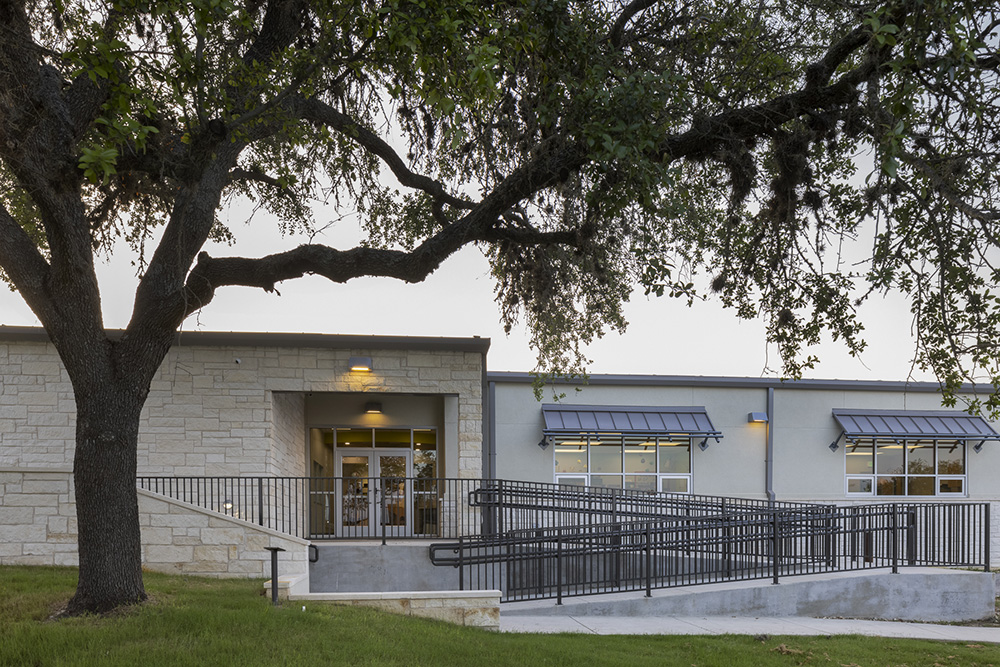In the heart of Central Texas, where vibrant cities like Austin, San Antonio, and Houston thrive, the landscape of commercial construction is as dynamic as the region itself. With this growth, ensuring that buildings are accessible to everyone has become a critical focus, even in small towns like Wimberley, and San Marcos. The Americans with Disabilities Act (ADA) sets the standard for accessibility. Navigating these requirements is essential for businesses looking to create inclusive spaces, and it’s required for government and non-profit organizations. Here’s a guide to understanding and achieving ADA compliance in commercial construction in Central Texas.
Understanding ADA Compliance
The ADA, enacted in 1990, mandates that public and commercial spaces be accessible to individuals with disabilities. This includes everything from physical access to effective communication. For commercial buildings, ADA compliance isn’t just a legal requirement; it’s also a commitment to inclusivity that can enhance your business’s reputation and reach.
Key ADA Compliance Areas for Commercial Construction
- Entrances and Exits
- Accessible Routes: Ensure that there are accessible routes from parking areas, public transportation, and sidewalks to the building entrance. Ramps, elevators, and wide doorways are essential.
- Automatic Doors: Consider automatic doors for ease of access, especially for those using wheelchairs or other mobility aids.
- Restrooms
- Accessibility Features: Restrooms should include accessible stalls, sinks, and grab bars. Ensure that these features are designed to accommodate all users comfortably.
- Signage: Proper signage indicating accessible facilities is also a key component.
- Parking
- Designated Spaces: Provide clearly marked accessible parking spaces near building entrances. These should be designed to accommodate a range of vehicles and needs.
- Pathways: Ensure that pathways from parking areas to building entrances are well-maintained and free of obstacles.
- Elevators
- Dimensions and Controls: Elevators should be large enough to accommodate mobility aids and should have controls within easy reach.
- Braille and Tactile Signage: Include Braille and tactile signage in elevators to assist those with visual impairments.
- Service Counters
- Height and Reach: Service counters should be accessible, meaning that they are within reach for individuals in wheelchairs or with other mobility challenges.
- Emergency Egress
- Accessible Routes: Ensure that emergency exits and evacuation routes are accessible and clearly marked. It’s crucial that these routes are as easy to navigate as the main building routes.
Local Considerations in Central Texas
Central Texas brings its own set of considerations for ADA compliance due to its unique climate, topography, and urban planning:
- Climate Adaptations: Given the hot temperatures in Central Texas, ensure that exterior accessible routes have proper shading and are made of materials that can withstand heat while remaining safe and slip-resistant.
- Topography: In areas with hilly terrain, like Wimberley or the Texas Hill Country, it’s important to design ramps and pathways with appropriate slopes and resting areas to meet ADA standards and ensure safety.
- Building Codes: Local building codes and regulations might have specific requirements or additional standards beyond the ADA. Always check with local authorities to ensure full compliance.
Best Practices for ADA Compliance
- Consult with Experts: Work with architects, Consultants, and contractors who have experience with ADA compliance. They can provide valuable insights and help avoid costly mistakes.
- Plan Ahead: Integrate ADA considerations into the design phase to avoid retrofitting and ensure that accessibility is seamlessly incorporated into your project.
- Regular Audits: Conduct regular accessibility audits and updates to maintain compliance as regulations and standards evolve.
Renovation Instead of New Construction
When renovating or repairing any existing structures, it’s important to check for ADA compliance during the early planning phases. Previously grandfathered exceptions will likely be under new scrutiny and may need to be updated in order to pass inspection.
ADA Compliance of Residential Construction
Multi-family and government subsidized residential buildings must meet the standards set out by the Texas Government. They are similar to those outlined for commercial buildings but strict adherence is required. The guidelines and laws are different for single family residential construction but the basic tenants outlined by ADA are a perfect guide for building or renovating to accommodate aging adults or disabled family members.
Conclusion
ADA compliance is more than a regulatory obligation—it’s a commitment to creating spaces where everyone can feel welcome and accommodated. In Central Texas, where commercial construction is booming, paying close attention to accessibility not only ensures legal compliance but also sets a standard for inclusivity and care.
By prioritizing ADA compliance in your construction projects, you contribute to a more equitable community and pave the way for a more accessible future for all.
*Please use this article as a guide, not as your legal reference for construction planning. Refer to the ADA website for up to date accurate information on construction accessibility.
If you would like to ensure your construction project is ADA compliant, or if you’d like to to hire a consultant to make a residential building more accessible, please get in touch.
